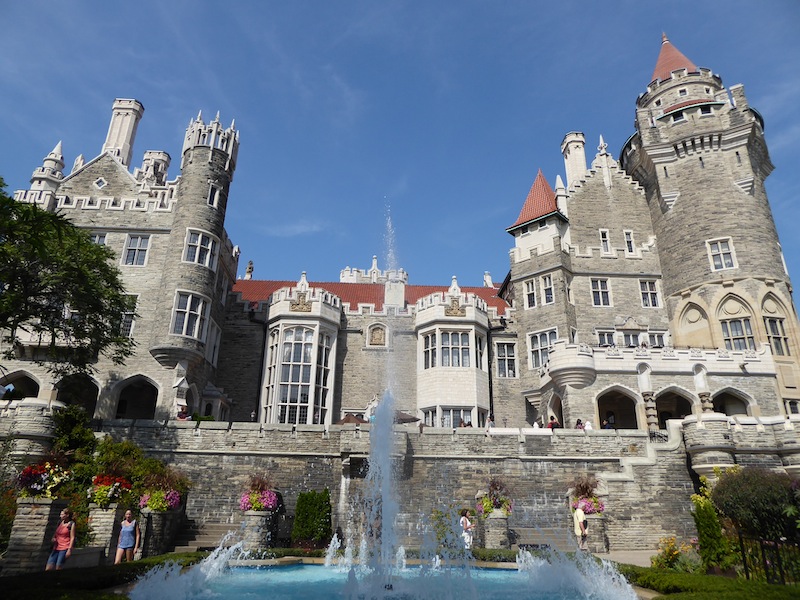After a day of rain, we woke in Toronto to sunshine ready to visit some great houses and explore the city’s history.
But late-night revellers and the sirens of a city weekend had meant for a broken night of sleep so it wasn’t easy dragging ourselves away from the duvet to grand Casa Loma. Still, after breakfast we braced ourselves and began our trip, wandering up to the vibrant Kensington Market near Chinatown to find another of Toronto’s very distinct districts. Physically the market, which is bordered by College Street to the north, Spadina Avenue to the east, Dundas St West to the south and Bathurst Street to the west, is as muddled and ragged as its rich history of immigration. Quiet on a Sunday morning, it nevertheless looked like a district that followers of alternative lifestyles would call home, and the range of misfits and eccentrics stalking the streets, shops and cafes provided the proof. But gentrification was also evident.
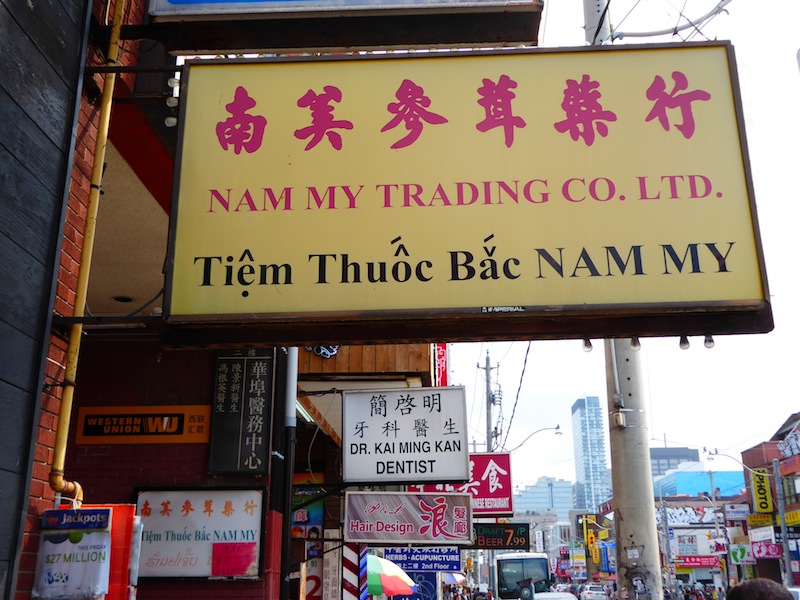
The smell of ganja filled the air and I found myself thinking about Berlin, because Kensington Market has much in common with the German capital’s trendier districts. Sadly the stalls that make up the market were notable by their absence but shopkeepers were preparing to open and the joints offering breakfast and coffee were doing a good trade. The neighbouring streets were full of character, with their Victorian homes, colourful street art, a synagogue and a parked car that had been turned into an oversized plant pot. The architecture, the street names and the signage betrayed the history of immigration to the area, which over the last 200 years has been home to Irish and Scots, Jews, people from the Azores and more recently the Chinese.
We wandered through neighbouring Chinatown – typically chaotic, the air thick with the smells of weird and wonderful concoctions, the shopfronts gaudy and ugly and dirty. Thank goodness, I thought, that the Chinese still favour their neighbourhood stores over bland and sterile supermarkets because the streets would be a darn sight more boring without them.
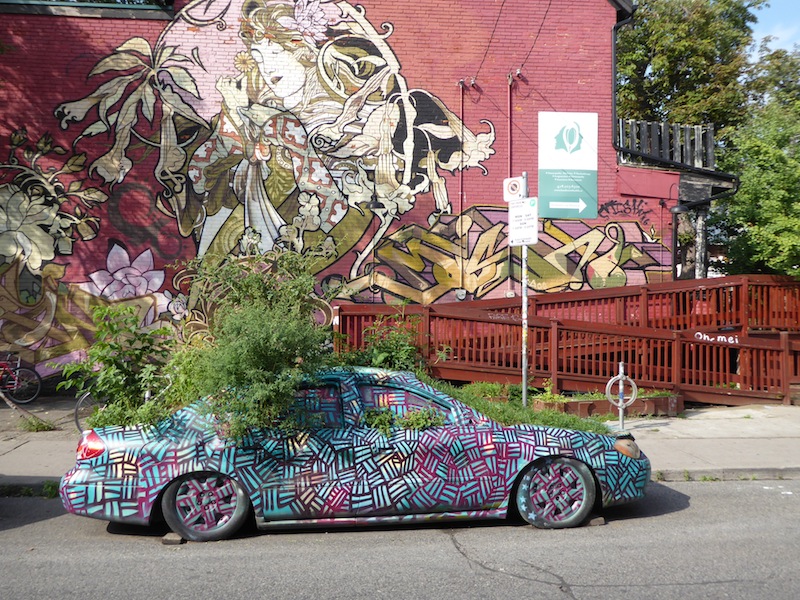
For a complete contrast we caught the metro north to the ludicrous faux castle of Casa Loma, close to the Davenport district. Standing on a bluff overlooking the modern city, it was designed by architect EJ Lennox for the businessman Sir Henry Pellatt and built in the years before the First World War. An odd mix of Scottish Baronial and Gothic Revival, and once Canada’s largest private residence, it makes for a strange and unexpected addition to the Toronto skyline as well as a popular stop on the tourist trail. It just about avoids coming across as a Disneyesque caricature.
Crowds filled the bright and expansive great hall, which bizarrely included a theatre organ, but many of the other downstairs rooms were heavy with depressing wood panelling. A dining room was fitted out ready for a wedding.
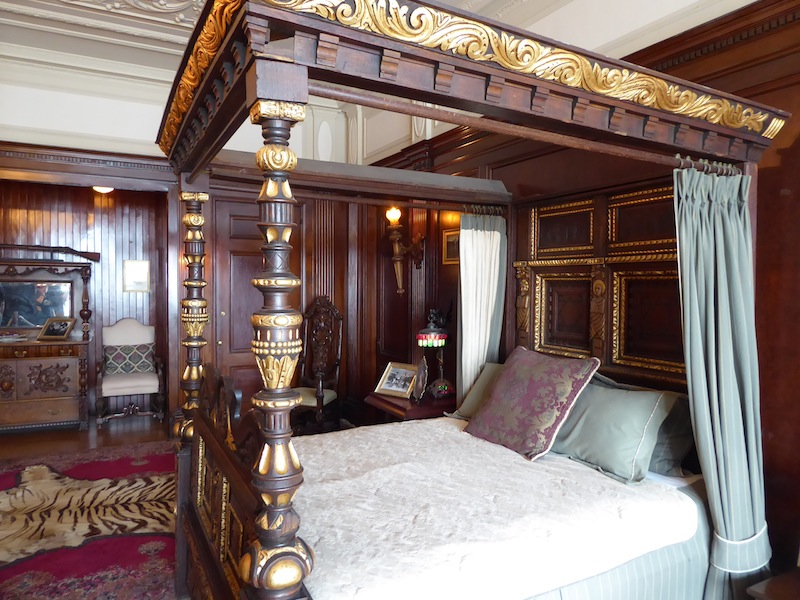
The bedrooms upstairs were lighter, brighter and rather more elegant, and the bathrooms showed off the innovations of the early 20th century. In the muggy heat, we climbed the narrow stairs of the castle’s two principle towers and enjoyed the hazy views to south and north.
Another floor hosted the Queen’s Own Rifles Museum as Sir Henry was a distinguished major general in the regiment, which still exists. A short distance away was Casa Loma’s grand stable block, built shortly before the castle and a place Sir Henry called home while he supervised the building of the main house. So that he didn’t have to use those horrid public roads to get from one to another, he had them linked by an underground tunnel.
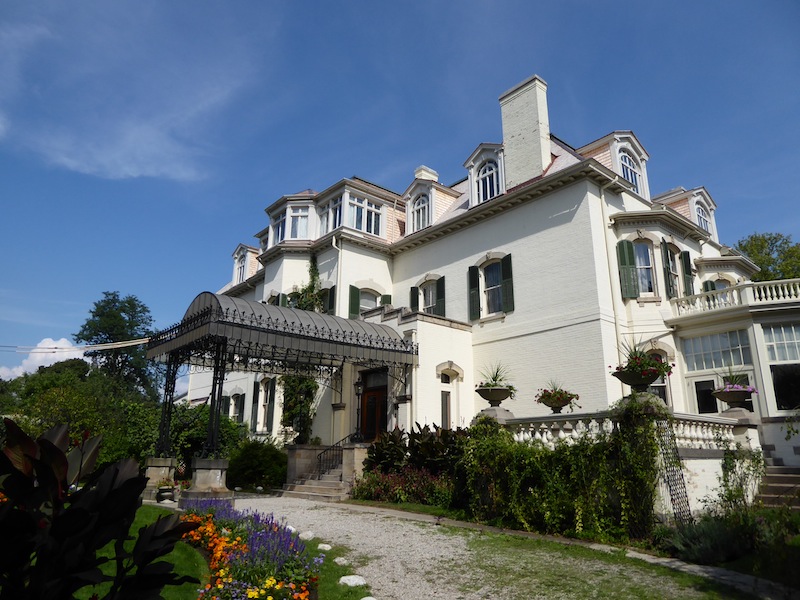
Poor Sir Henry didn’t get to enjoy his house for long, though. He’d made lots of money from such activities as providing electricity to Toronto but post-war economic gloom and the huge cost of his building programmes saw his wealth dwindle. A huge auction of his property failed to bring in enough cash to replenish his coffers so he had to move out in 1923, and he died somewhat short of cash in 1939.
After a tour of the lush and beautifully planted grounds, we wandered over the road to the charming gardens of the Spadina Museum where, more by luck than judgement, we found ourselves in the thick of the City Cider festival. It had been organised by the Not Far From the Tree charity, which does an excellent job of helping locals harvest all the fruit from the trees in their gardens and then shares it with the volunteers, residents and local food banks, shelters and community kitchens. In an area that was once full of orchards, many gardens are still full of fruit so the charity ensures that none of that bounty goes to waste. It’s an excellent idea.
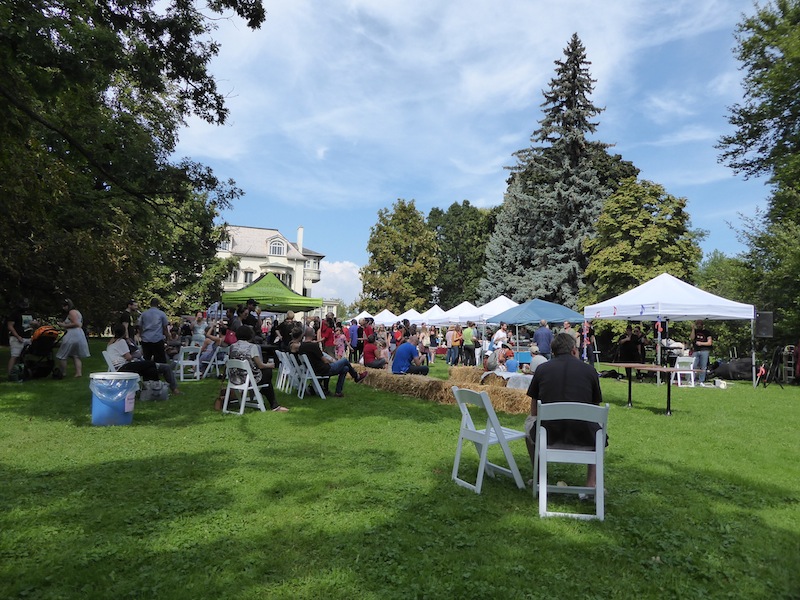
We chilled out in the gardens, supped on craft ciders produced locally with some of those apples, batted away the wasps and tried out a few of the nibbles on offer. Singers and bands provided the soundtrack, and it was all charmingly middle class.
Rested, we toured the house. In the basement are the archaeological remains of the original property, built by the Baldwin family in around 1818. But it was the later owners, the Austins, who rebuilt the property we visited and it’s furnished in a range of styles that various generations would recognise, from the 1860s through to the 1930s. Overall, it would’ve been more livable than neighbouring Casa Loma and it was certainly more interesting to visit.
In the evening, back in town, we walked west to Le Select Bistro and dined on excellent French food. But the bar we wanted to visit afterwards ended up being a giant hole in the ground close to our hotel – one of Toronto’s many building sites. The city is one that’s constantly reinventing itself but in the process seems to be losing a lot of its heritage buildings to the march of progress. Right by our hotel, in fact, several fine residential and industrial properties had planning notices slapped on them, promising their replacement with giant towers. At least they have to incorporate the frontages into their schemes but it makes for an awkward compromise a times.
We ended up in a very average bar for a nightcap – an average bar that was marginally better than a hole in the ground.

